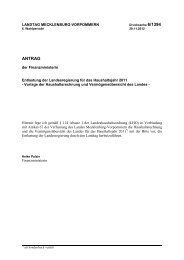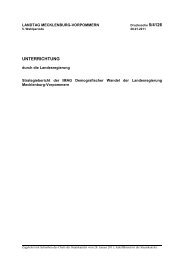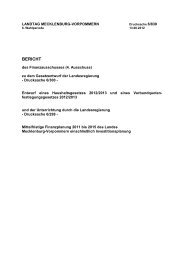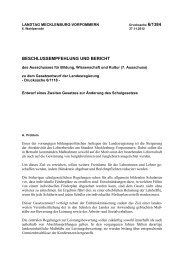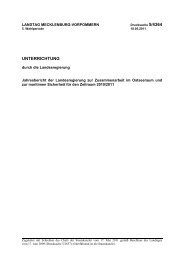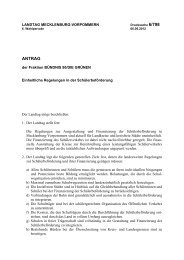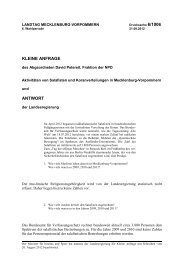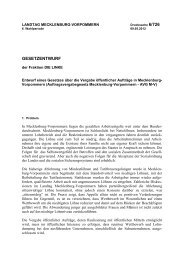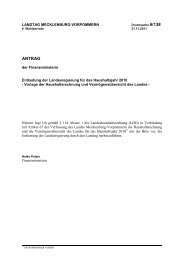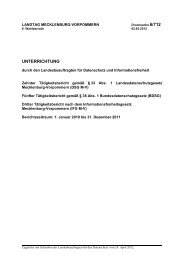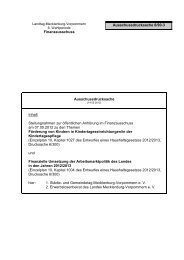Baltic Rim Economies - Baltic Port List
Baltic Rim Economies - Baltic Port List
Baltic Rim Economies - Baltic Port List
Create successful ePaper yourself
Turn your PDF publications into a flip-book with our unique Google optimized e-Paper software.
Expert article 867 <strong>Baltic</strong> <strong>Rim</strong> <strong>Economies</strong>, 21.12.2011 Quarterly Review 5�2011<br />
(depending on the velocity of such vessels). The large regional<br />
archipelago areas will complicate such theoretical calculations<br />
because of their own specific traits and particular needs; the<br />
shortest way to reach the victim vessel is not always feasible for<br />
navigational reasons. The marine forces of the countries around<br />
the <strong>Baltic</strong> Sea have actually no resources to exercise such activity,<br />
and to bring together a necessary fleet.<br />
Unarmed Merchant Vessel – Easy Booty<br />
The most vulnerable object in all anti-piracy operations is the<br />
merchant vessel itself and its crew. The 400 000 crew members on<br />
the 20 000 vessels sailing in the Gulf of Aden annually jeopardize<br />
their lives to protect the freedom of the seas and to maintain<br />
international sea traffic.<br />
For decades, unarmed merchant ships have been easy<br />
booties in wars and conflicts. Although the situation off Aden does<br />
not yet meet the descripton of open war, violence already holds<br />
the reins. The area has obtained the status of a war zone in the<br />
classification of international insurance business. The amount of<br />
insurance for a merchant vessel sailing through the Gulf of Aden<br />
was in 2008 only 0,015 per cent of the value of the ship; today the<br />
charge is 0,15 per cent, i.e. the expense is now tenfold. In the<br />
Strait of Malacca in the Far East the amount may rise up to 0,8 per<br />
cent, which is 50 times higher than in 2008. The freight charges<br />
have risen correspondingly, and the consumer is obliged to pay<br />
these soaring charges in the form of higher prices of commodities.<br />
On the initiative of the marine authorities of the United States<br />
the security system of the IMO (the International Maritime<br />
Organization), the ISPS ( the International Ship and <strong>Port</strong> Facility<br />
Security Code) involving vessels and ports with foreign trade<br />
activities has been universally adopted from the beginning of 2008.<br />
This arrangement binds every port and merchant vessel to design<br />
an up-to-date security plan, and to carry out pertinent and regular<br />
practices in this matter. Finnish foreign-trade ports are today<br />
fenced accordingly, and the access to the port area is controlled<br />
and prohibited without permission.<br />
How then can the vessels protect themselves against pirates?<br />
The events off the Somali coast reveal that the attacks are mostly<br />
directed on vessels with low dry boards (the height of the main<br />
deck from the sea surface), sailing at low speed, with little<br />
preparedness against pirate attacks, and with slow response in<br />
repelling assaults. There is actually no chance to accelerate the<br />
low (below 15 knots) speeds or to elevate too low (below eight<br />
metres) dry boards but structural reforms might raise the threshold<br />
of being hijacked: obstacles of barbed wire on the gunwales,<br />
pressurized fire hoses on the decks etc.<br />
In addition to the safety measures taken by the vessels<br />
themselves, war ships offer, within their resources, shelter on<br />
predetermined and hazardous route legs in the Gulf of Aden.<br />
According to the statistics pirate attacks occur mostly in broad<br />
daylight, and sailing on the risky legs should therefore be done<br />
preferably in the dark.<br />
A pirate attack may be divided into three phases: in the first<br />
phase an unidentified object approaches the merchant vessel in a<br />
suspicious manner, in the second phase the approacher attacks,<br />
and in the third the pirates board the vessel and hijack it. If the<br />
defense measures work well, the attackers will at some point give<br />
up their intentions and disappear. If the pirates succeed in<br />
boarding their target vessel, the game is in most cases over.<br />
According to the instructions of the IMO the crew should, in such a<br />
case, stay calm, give up all resistance, and appear to be willing of<br />
cooperation with the attackers.<br />
The various organizations within sea trafficking recommend<br />
that the defender, i.e. the merchant vessel should not resort to<br />
17<br />
weapons in order to prevent further escalation and to save the<br />
lives of the crew. during this autumn the British have begun to use<br />
armed guards on their merchant vessels.<br />
Consumers pay for Criminal Actions<br />
Still, the criminal acts of pirates are a deep-going factor in global<br />
economy. Ransom money must be paid, and the vessels with their<br />
valuable cargo may be damaged. If this, in its turn, restricts the<br />
supply of the commodities concerned, the prices will go up, and,<br />
again, the consumer is the payer. Goods deliveries will be delayed<br />
or may not reach their destination at all.<br />
In world trade operations the ship owners have to increase the<br />
structural safety measures of their vessels; these, in turn, will incur<br />
expenses of maintenance, and the impacts will be recurred in<br />
freight charges and in consumer prices. One notable and<br />
appreciable solution might be to transfer the sea transportations to<br />
more secure routes, but this will lengthen the sea passages<br />
resulting in rising expenses to be paid lastly by the consumers.<br />
Sailing round the Cape of Good Hope in order to avoid the Gulf of<br />
Aden will lengthen the sea passage from the Persian Gulf to<br />
Rotterdam more than 3 500 sea miles; at the rate of 15 knots this<br />
would mean about ten extra days at sea. The extra cost of fuel<br />
would be paid again in higher consumer prices.<br />
The Core of the Problem Lies in the Soil of Somalia<br />
Preventing piracy and taking precautions against it is the obligation<br />
of the entire civilized world. The situation in the Strait of Malacca<br />
was stabilized through mutual understanding of the conference<br />
called by the United Nations, and the number of pirate attacks was<br />
reduced as a result of the tripartite treaty of the states in that area.<br />
The situation off the Somali coast is entirely different: even though<br />
the resources might be sufficient at sea, the core of the problem<br />
lies on the land.<br />
The support area of the pirates, i.e. the coastal regions in<br />
Somalia is void of the jurisdictional authority of a constitutional<br />
state. The bases of the pirates seem to function well as a part of<br />
their activity. The population seems to give them their silent<br />
approval close to the large-scale unemployment in the area. To<br />
them, piracy appears to be lucrative and relatively secure<br />
business.<br />
Apprehending persons suspected of piracy, and arrangements<br />
agreed in advance to surrender them into the hands of justice<br />
would be a step in enhancing the preliminary threshold of<br />
deterrence. Releasing pirates gives them, instead, an opportunity<br />
of renewing their attempts to attack appropriate targets; the effect<br />
of protection and its results come thus to nothing, they will flow into<br />
the sands of Somalia.<br />
We all will benefit by a successful solution which will eradicate<br />
piracy for good from this world. The result of such a solution will be<br />
seen, if not in our wallets but at least in the prices of commodities<br />
universally needed, in the price of fuel, and , in the end, in our own<br />
well-being.<br />
Bo Österlund<br />
Commodore (retired)<br />
Finland<br />
� Pan-European Institute � To receive a free copy please register at www.tse.fi/pei �



